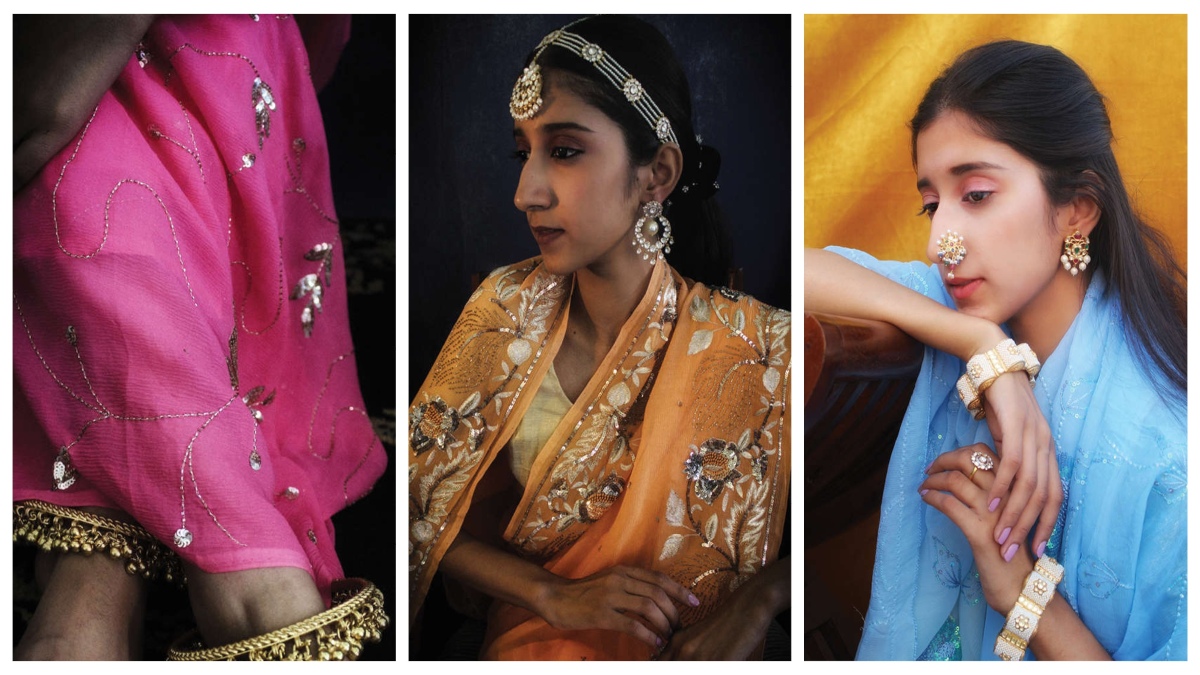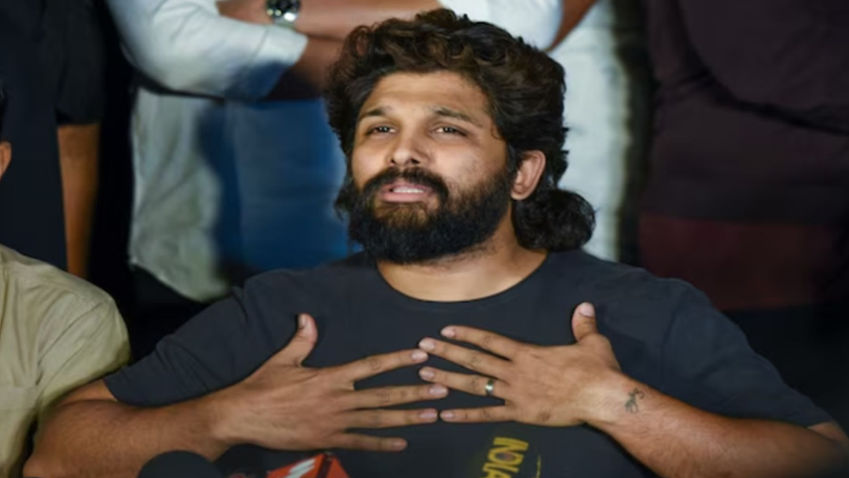“Ever since I was a little child, I was a witness to many baithaks where the women of the family viewed jewellery crafted by the finest kaarigars of Rajasthan. From haath phool to cummerbunds, from pachelis to kangans, they would be shown the finest within the comfort of their drawing room at Mundru House. And I, being the only daughter of the family, would sit in utter awe at the dazzle of each piece.”
Vibha Shekhawat, born into the Thikana of Mundru Village in Shekhawat, now runs a craft-based jewellery studio, Kanak Kriti, where she recreates every piece of jewellery that she saw her mother and grandmother acquire, pass down and cherish. From aads made in partaashkakaam (“Each piece crafted by hand from a thick sheath of gold by ancestral craftsmen who are masters in this art form.”), to pachelis encrusted with a carpet-like setting of tiny pearls, to haathphools that can be reinvented and reused in many forms, Vibha keeps every element of Rajput jewellery alive, insisting that Rajasthan has a rare tale to tell about jewellery craftsmanship. “I am simply trying to keep this legacy alive,” she says.







Granddaughter of the much respected philanthropist Mohar Singh Rathore, a Member of Parliament from Churu, Vibha has seen enterprise and social work coexist all her life. “Both my father and my grandfather (Nanusa) are into politics. My grandfather was a leading advocate, parliamentarian, and social and political activist. He voluntarily donated land to develop gaushalas, establish hostels for rural boys and girls, set up exclusive UG and PG education institutions for girls. He is still revered like a legend, given the number of schools and colleges and the development work he undertook in Churu. My father and my uncles continue in his footsteps,” she shares.
A family that is into mining marbles with a mine in Katni, the Shekhawats are also about to launch an idyllic resort on the Delhi-Jaipur highway that they have named Gordhan Resort, after their grand patriarch. “It was actually a farm and holiday home for the family where we grew all our organic vegetables and fruits and also kept cattle. It was our way of keeping the connection with our village roots alive and now we want to give city folks a peep into this way of life,” says Vibha.
Vibha, in her school, MGD, made friends with girls who “hailed from diamond merchant and traditional jewellery families”. “Hanging out with them, I inadvertently saw myself steering towards jewellery design,” she says. And thence was born Kanak Kriti, a house of jewels that is known to craft not just heirloom pieces but also precious stones set in gold polished silver. “All my pieces have the finest precious and semi precious stones inlaid in them. I ensure each piece is set in a traditional style and no glue is used, making it very simple to reset them in another metal and another setting,” Vibha says.
Another specialty is how she creates jewels that can be used in multiple ways. “My haathphools can be used as rings, bracelets, neck pieces and mehri, which was traditionally worn by women on their foreheads,” she explains.
Vibha also takes care to keep the look and feel of each piece as authentic as possible. “My aads bring alive the navrattan setting in partaashkakaam exactly how they were made three generations ago.”
Her works are not just for women. She also creates masterpieces for men in the five elements that were traditionally gifted to a royal groom: a serpech for the turban, buttons for the achkan, a thick kantha in gold for the feet, a chain for the neck and a kada for the hand. “I make each of these pieces in a way that they can be used later—the serpech as a neck piece, the buttons as ear studs!” she explains. As for the dandy men, she has a whole range of tie pins, broaches and ear studs. “Let’s not forget that women and men in Rajasthan are a bejewelled lot,” she says. And with Kanak Kriti, Vibha ensures they keep their dazzle intact.







